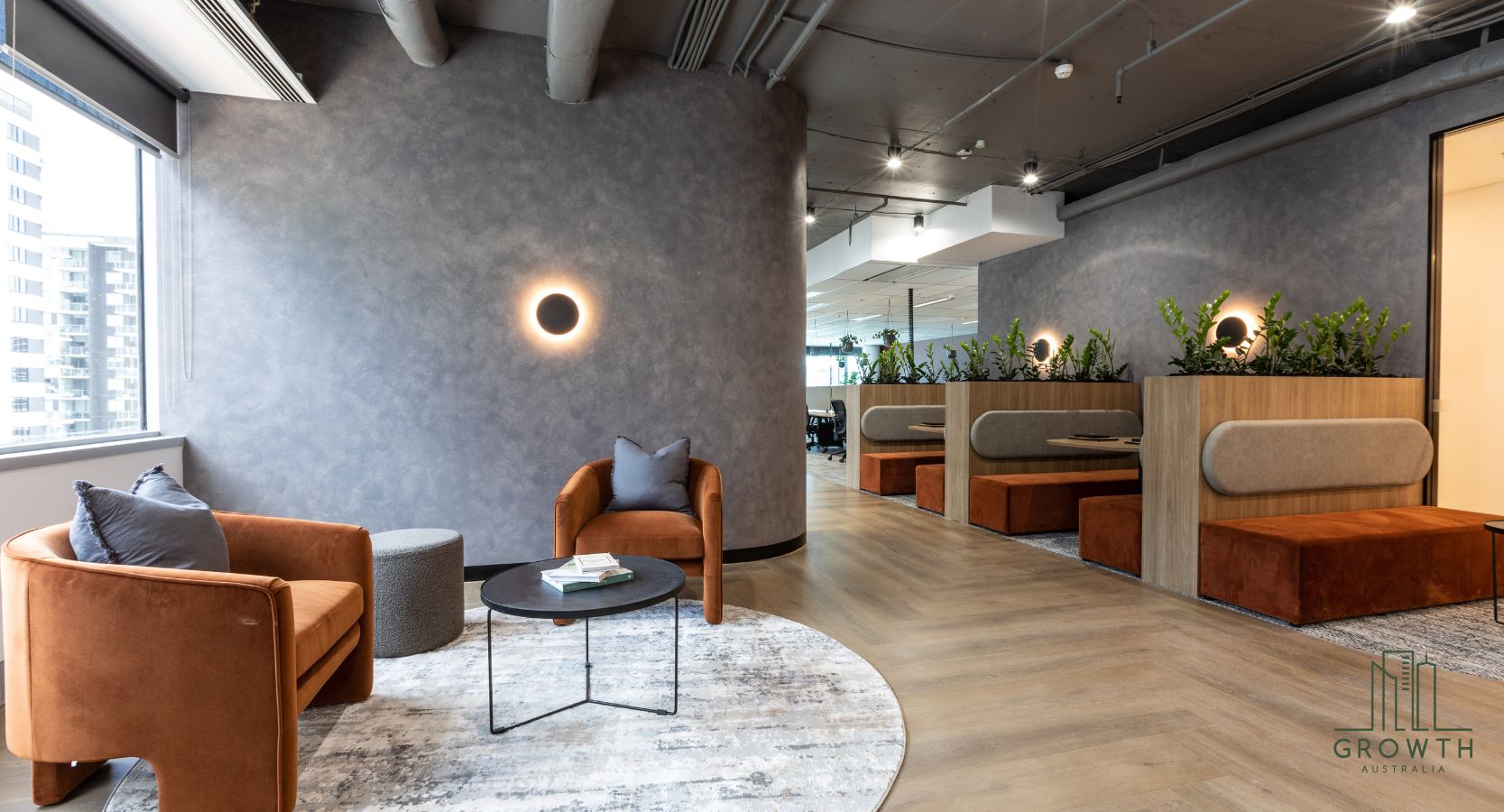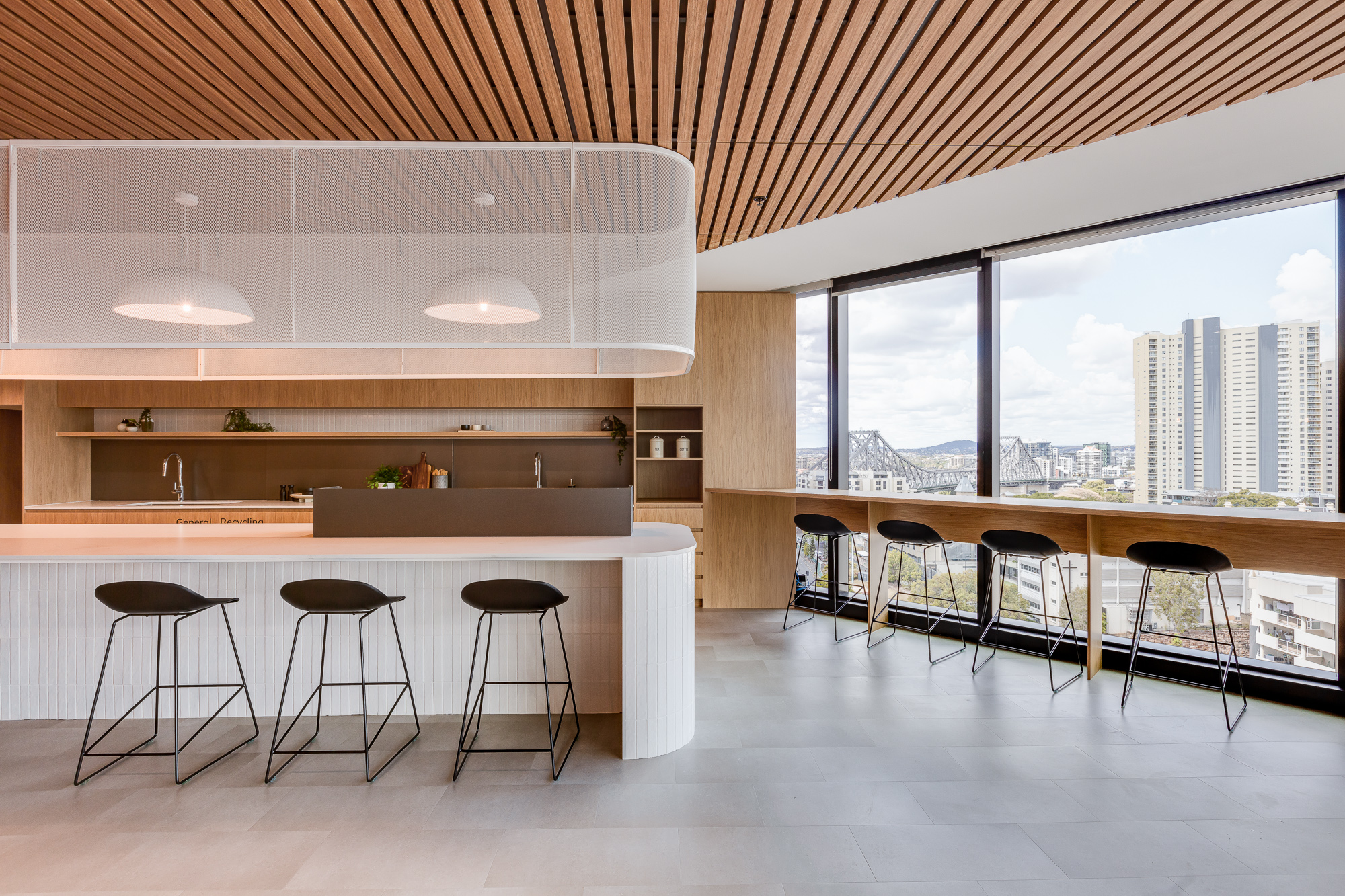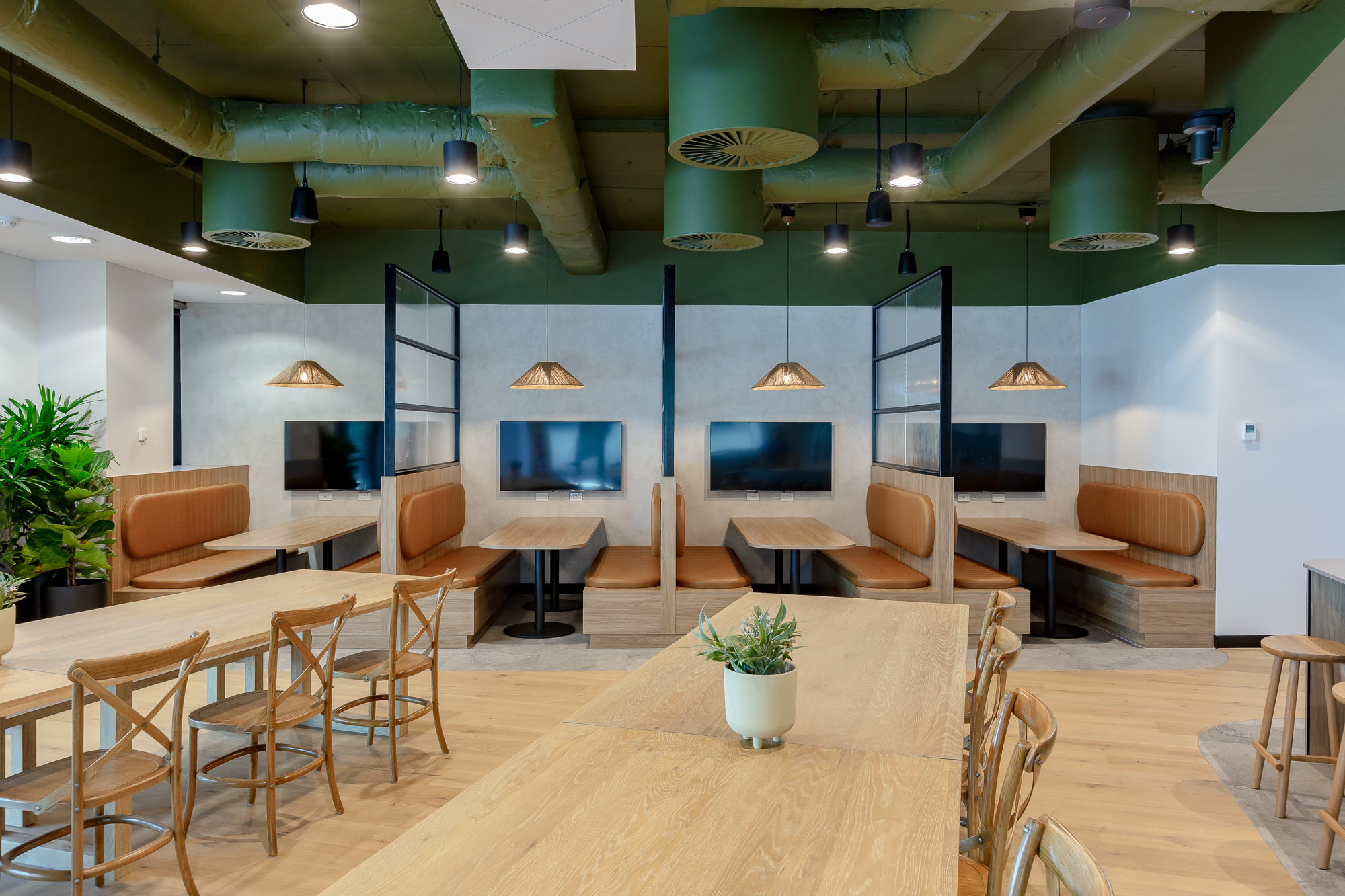As businesses look to the future, there is a growing trend towards bold and innovative commercial interior design choices. This year marks the start of a new era of design, one that is both functional and fashionable. Whether your business is large or small, incorporating the latest interior design trends will give your workplace the edge it needs to remain competitive in the ever-evolving business landscape.
In this blog, we will explore our top Commercial Interior Design trends for 2023 and how they can be implemented to help your business stand out.
1. Multifunctional spaces:
With tenants looking at downsizing and taking less space due to popular hybrid work models, flexibility is key. We are seeing a focus on incorporating flexible and multipurpose spaces which can be utilised for different activities. An example of this is a large kitchen and breakout spaces with tech solutions to enable a kitchen for mingling and eating, as well as space for both companywide town hall updates and client-facing social events. Flexibility in the workplace also means incorporating furniture and layouts that can be adapted easily to accommodate different types of tasks and work styles. Moveable furniture, such as mobile desks or folding chairs is a great option for workplaces as it allows for easy reconfiguration and can save space when needed.
2. Layout trends:
We are seeing a focus on activating the front-of-house reception, waiting and meeting spaces by incorporating in-formal meeting zones, integrated hydration and high bar seating points or smaller touch-down concierge desks, rather than large, under-utilised reception desks and stark static waiting areas. This trend also allows the receptionist to feel more included in the everyday hustle and bustle of the office. We are also seeing the staff kitchen and breakout zone move closer towards the front of the office, allowing guests to see a sneak peek into the everyday activities within their company and showcasing their culture.
3. Open-plan areas:
Across the board, we are seeing open-plan areas becoming increasingly popular and less of a focus on closed-off offices for managers and senior leaders. This encourages cross-team collaboration and communication among employees, eliminating ideologies around hierarchy and supporting transparency across companies. We are also seeing meeting rooms, offices and less utilised spaces move away from perimeter glazing and towards internal walls, allowing staff work points to be situated here instead. By locating open-plan workspaces along perimeter glazing or windows and allowing plenty of natural light to pour into these zones, staff are enabled to work within a pleasant environment conducive to productivity.
4. Flexible furniture options:
Incorporating different furniture settings into a workplace is vital in creating a successful workplace, as various settings support different work styles and activities. Individual workstations and small focus rooms work well for solo work and large tables and chairs with writable walls or screens, work well for collaboration. Hard and soft furnishings also help staff to distinguish which areas are for quieter, more focused work and which are suitable for nosier collaborative or social behaviour. Ergonomic furniture is also essential in any modern workplace, allowing staff to adapt pieces to suit their needs. By incorporating user-friendly adjustable desks, chairs, and other furniture, you can help promote good posture and reduce strain on staff.
5. Hybrid office:
We are frequently asked ‘how much space do I need now that I have a flexible workforce?’ Firstly, we need to understand the structure of any policies around WFH to gauge how many occupants will be using the space at any given time and the types of work staff will be completing i.e., focus on collaboration or meetings in the office and focus work at home. We have been seeing a reluctance to take on a completely agile style of working (one where users don’t have a designated desk), as the staff still enjoy having a ‘home’ spot in the office – this can be important when trying to attract staff back. We recommend a 1:10 ratio of workstations to sqm of space, although with smaller-sized workstations, there is more room to incorporate nearby support spaces for collaboration, focus work or meetings.
6. Giving back to staff / getting staff back into the office:
Some key considerations we are seeing incorporated into office spaces, to attract staff are a variety of different work settings to plug into and work from, a balance of collaboration and quieter focus spaces, large and inviting social spaces, well-being elements such as meditation rooms or exercise rooms and unique company perks such as stocked communal pantries, stocked bar fridges and team lunches or drinks, to promote socialising and enhance office culture. This plays into the whole ‘War on talent’ piece we are seeing: It’s all about offering staff better amenities, flexible ways of working and giving them an experience that they are missing out on if they are at home.
7. Technology-enabled spaces:
Designing a workspace with technology in mind is necessary. Incorporating the latest technology, such as touch screens, interactive whiteboards, and audio-visual equipment, can help make the workplace more efficient and effective.
8. Staying connected virtually:
With the increase in usage of video calling software, to meet with both internal staff and external clients, it’s so important to offer adequately designed, tech-enhanced focus and meeting rooms that can be easily and seamlessly utilised by staff. Offering seamless technology and adequate acoustics throughout workspaces and meeting rooms, can enhance staff’s overall experience within the office space and be used as a tool, towards compelling employees back into the office. We aren’t just talking about streamlining tech within the physical office environment though, it’s also important to enable simple and suitable tech solutions for work-from-home settings, as consistency throughout all work settings is key.
9. Biophilic Design:
This design movement emphasises incorporating natural elements such as natural light, access to natural views and greenery throughout the interior. Both natural light and lush greenery are important factors towards creating a productive and enjoyable workplace. Biophilic design works to bring the outside in and create a sanctuary for staff to feel comfortable, happy and productive. Plants not only create visual interest and a splash of colour, but they also assist with better indoor air quality and overall well-being.
Incorporating natural finishes and colour palettes into the workplace can work to create a sense of calmness and familiarity with the home environment. With staff spending more time at their residence and some reluctance to come back into the office, we are seeing an increase in bringing comfortable furniture, rich textures and natural elements into workplace design, resonating with those often found in residential design and thus creating a homely workspace.
10. Sustainable Design:
Sustainability is an important design element that has become increasingly prevalent in recent years. Sustainable design features include energy-efficient lighting, water-saving fixtures, and materials sourced from sustainable sources. By incorporating these design trends, you can ensure your workplace is comfortable, productive, and on-brand. Keep these trends in mind when planning your office fit-out and you’ll be sure to create the perfect corporate interior for your business.
Commercial Interior Design is becoming increasingly important for businesses looking to remain competitive and successful in the modern business landscape. Incorporating the latest trends in interior design will ensure that your business makes a lasting impression on staff, clients, and prospects and can remain competitive in the ever-evolving business landscape. By taking risks and breaking away from traditional commercial designs, your business can create a comfortable, professional, and on-brand work environment that will benefit both employees and customers alike. With the start of a new era in 2023, businesses should begin to consider bold and innovative Commercial Interior Design choices to stay ahead of the competition.
For about how the Growth Australia team can help you with your commercial fit-out requirements, please contact Tim@growthaustralia.com.au.



